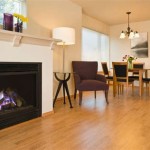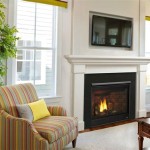DIY Barn Door Fireplace Screen: A Fusion of Rustic Charm and Fire Safety
Fireplaces, whether wood-burning, gas, or electric, provide warmth and ambiance to a living space. However, they also present potential hazards, particularly the risk of sparks and embers escaping the firebox. A fireplace screen is an essential safety device that mitigates these dangers. Traditional fireplace screens, while functional, can sometimes lack visual appeal. This article explores the construction of a DIY barn door fireplace screen, combining rustic aesthetics with effective fire protection. This project offers a customizable solution for homeowners seeking to enhance their fireplace's safety and integrate a unique design element into their decor.
This DIY project involves modifying a small barn door, or constructing one from scratch, and adapting it to serve as a protective barrier in front of a fireplace. It requires basic woodworking skills, familiarity with power tools, and a commitment to following safety precautions throughout the construction process. The result is a functional and visually striking fireplace screen that complements various interior styles, from farmhouse to modern industrial.
Key Point 1: Material Selection and Preparation
The selection of appropriate materials is paramount to the success and safety of the DIY barn door fireplace screen. The frame of the "barn door" component can be constructed from solid wood, such as pine, fir, or cedar. Pine is often a more cost-effective option, while cedar offers enhanced durability and natural resistance to decay, particularly beneficial if the screen might be exposed to moisture. The dimensions of the wood will depend on the desired size of the screen and the overall aesthetic. Common sizes for the frame members include 1x4 or 1x6 lumber.
The screen itself needs to be made from a fire-resistant material. Metal mesh, specifically steel or iron mesh with a fine weave, is the most suitable choice. The mesh must be robust enough to prevent sparks and embers from passing through while allowing adequate airflow to maintain efficient combustion if the fireplace is wood-burning. The mesh should be free of any coatings or finishes that might release toxic fumes when exposed to heat.
Hardware is another crucial consideration. The "barn door" aesthetic necessitates the use of barn door-style handles or pulls and potentially decorative hinges. These components should be made of durable metal, like wrought iron or steel, and should be securely fastened to the wooden frame. Ensure the hardware can withstand the heat radiating from the fireplace without warping or becoming excessively hot to the touch.
Before commencing construction, the selected wood must be properly prepared. This involves sanding the surfaces to create a smooth finish, removing any splinters or rough edges. The wood can then be stained or painted to the desired color. Ensure that the stain or paint is a fire-retardant or low-VOC (Volatile Organic Compounds) product to minimize the release of harmful chemicals when subjected to heat. Allow the stain or paint to dry and cure completely according to the manufacturer's instructions.
The metal mesh must also be prepared. Cut the mesh to the appropriate size, ensuring it is slightly larger than the opening in the wooden frame where it will be installed. Use metal shears or a cutting disc attached to a rotary tool to achieve clean cuts. Be cautious of sharp edges after cutting and deburr them with a file or sandpaper to prevent injury during handling.
Key Point 2: Construction and Assembly of the Screen
The construction phase begins with assembling the wooden frame. This typically involves joining the frame members using screws, wood glue, or a combination of both. Ensure the corners are square and the joints are strong and secure. Corner clamps can be utilized to maintain squareness during the assembly process. If desired, create a recessed area within the frame to accommodate the metal mesh, providing a flush or slightly recessed appearance.
Once the frame is assembled, the metal mesh is installed. The mesh can be attached to the frame using various methods, including staples, screws with washers, or metal retaining strips. If using staples, ensure they are heavy-duty staples made for attaching metal to wood. Screws with washers provide a more secure attachment and prevent the mesh from pulling away from the frame over time. Metal retaining strips, such as thin strips of steel or aluminum, can be screwed or riveted to the frame to hold the mesh in place. Regardless of the chosen method, ensure the mesh is taut and evenly distributed across the frame.
After the mesh is securely attached, install the barn door-style hardware. This includes the handle or pull and any decorative hinges. Position the handle at a comfortable height for easy access and ensure it is securely fastened to the frame. The hinges, if used, should be placed strategically to allow the screen to open and close smoothly. Consider using multiple hinges for larger screens to provide additional support.
Depending on the design, the screen may incorporate additional features, such as legs or a stand. Legs can be attached to the bottom of the frame to provide stability and prevent the screen from tipping over. A stand, constructed from wood or metal, can also be used to support the screen and elevate it off the floor. Ensure the legs or stand are securely attached to the frame and are level to prevent wobbling.
Throughout the construction process, prioritize safety. Wear safety glasses to protect the eyes from flying debris and gloves to protect the hands from sharp edges and splinters. Use a dust mask when sanding to avoid inhaling harmful particles. Ensure adequate ventilation when working with stains, paints, and adhesives.
Key Point 3: Customization and Safety Considerations
The DIY barn door fireplace screen offers ample opportunities for customization. The size, shape, and finish of the screen can be tailored to match the specific dimensions of the fireplace and the overall decor of the room. Different wood species, stains, paints, and hardware options can be used to create a unique and personalized design. The metal mesh can also be customized with decorative patterns or cutouts, although this should be done with caution to ensure the screen remains effective at preventing sparks and embers from escaping.
One customization option is to incorporate a second layer of metal mesh for enhanced fire protection. This is particularly useful if the fireplace is frequently used or if it produces a lot of sparks. The two layers of mesh should be slightly offset to create a more effective barrier. Another customization option is to add heat-resistant decorative elements to the frame. These elements could include metal accents, ceramic tiles, or natural stones. Ensure that these elements are securely attached to the frame and are capable of withstanding the heat radiating from the fireplace.
Safety remains paramount in the design and construction of the fireplace screen. The screen must be tall and wide enough to completely cover the fireplace opening, preventing sparks and embers from escaping. The metal mesh must be fine enough to prevent sparks and embers from passing through while allowing adequate airflow. The frame must be sturdy and stable enough to prevent the screen from tipping over. The handle and any other hardware must be heat-resistant and easy to grip.
After the screen is constructed, it should be thoroughly inspected for any defects or weaknesses. Check the joints to ensure they are secure, the mesh to ensure it is taut and evenly distributed, and the hardware to ensure it is properly attached. Test the screen by placing it in front of a lit fireplace and observing its performance. Ensure that no sparks or embers escape and that the screen does not become excessively hot to the touch. If any issues are identified, address them promptly to ensure the screen is safe and effective.
Regular maintenance is essential to ensure the continued safety and performance of the fireplace screen. Clean the screen periodically to remove dust, soot, and other debris that can accumulate over time. Inspect the screen regularly for any signs of damage, such as cracks, loose joints, or torn mesh. Replace any damaged components promptly to prevent further deterioration and maintain the screen's effectiveness. Store the screen in a safe and dry place when not in use to prevent damage from moisture or impact.
By carefully selecting materials, following proper construction techniques, and prioritizing safety, homeowners can create a DIY barn door fireplace screen that enhances the beauty and safety of their living space. This project offers a rewarding opportunity to personalize their home decor while ensuring the safety of their family and property.

How To Make A Barn Door Style Fireplace Screen Designertrapped Com

How To Make A Barn Door Style Fireplace Screen Home Makeover Remodel

How To Make A Barn Door Style Fireplace Screen Designertrapped Com

How To Make Barn Doors For Our Fireplace Diy Making Brick Makeover

How To Make Barn Doors For Our Fireplace Diy Hometalk

Fireplace Screen Doors With Rustica

How To Make A Barn Door Style Fireplace Screen Designertrapped Com

25 Barn Door Ideas In 2024 Fireplace Doors Farmhouse Interior

Amusing Fire Place Cover Barn Door Ideas

How To Make Barn Doors For Our Fireplace Diy Hometalk








